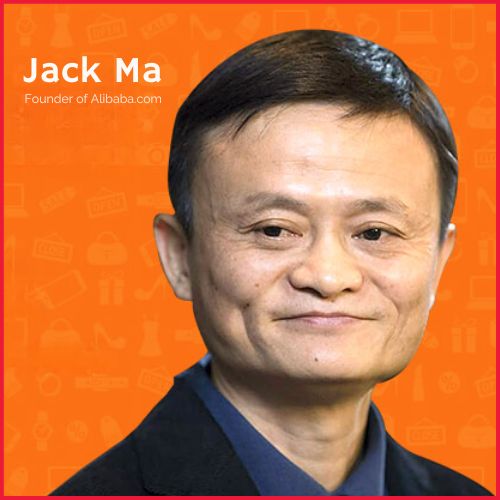You must have heard of non-fungible tokens (NFT) and the NFT marketplace, whether you are a business mogul of a well-known firm, a crypto enthusiast, or a student. And if you’ve heard about NFT, you might be wondering how to create an NFT marketplace. Non-fungible tokens, or NFT, are a relatively new notion in the cryptocurrency industry. And, since its inception, it has revolutionized the whole functionality of the digital world due to its extraordinary beneficial aspects and qualities. Non-fungible tokens (NFTs) are generated and distributed using a specialized platform known as the NFT marketplace.
NFTs are one-of-a-kind tokens that signify ownership of something fundamentally different and precious, such as artwork, a piece of music, a collectible, an in-game item, or real estate. These unusual sorts of digital assets, unlike ordinary cryptocurrencies like bitcoin or fiat money like the US dollar, cannot be traded for one another since each token has a unique value based on its unique qualities and attributes. To get started, you’ll need to become acquainted with the specialized markets where NFTs are often posted and exchanged, which differ from what you’re used to with crypto exchanges.
This NFT platform is the most original development, and it begs the question, “How do you construct an NFT marketplace?” And how do you create and sell NFT art? Every firm is considering establishing an NFT marketplace and establishing a presence in the well-known NFT area. And, after all, why not? This is an excellent opportunity to create an NFT marketplace platform. After all, individuals are spending millions of dollars on flashy digital assets, so why not turn them into a business?
If you want to learn how to create an NFT marketplace from the ground up, this blog is a wonderful place to start. In today’s article, we’ll go over all of the necessary processes, tips, and methods to produce.
What Does NFT Marketplace Mean?
An NFT is a digital asset that represents real-world objects that can be traded online, such as cars, music, art, collectibles, in-game items, videos, and so on. It is protected by a blockchain, most often Ethereum. That implies you can trade NFTs. The value of each token might rise or fall in response to the expansion of the NFT market. The phrase “non-fungible” is derived from economics. It is used to describe objects that cannot be interchanged because of their distinct characteristics. The furniture in your home is an example of a non-fungible object.
The following are the major distinguishing characteristics of an NFT:
- It cannot be duplicated.
- It cannot be replaced by another token.
- It has a unique code that distinguishes it from other digital reproductions.
- It grants you complete ownership of a digital asset.
- It can assist people in determining who owns a digital asset.
The NFT marketplace is an application that allows you to store, display, trade, or exchange non-fungible tokens (NFTs).To be more specific, NFTs are digital assets that are treated like real-world assets, and they are generally built on Ethereum Blockchain technology. The NFT marketplace enables initiators to display their NFT art to a big crowd. NFT platforms allow users to purchase and sell NFT art at a set price. However, you cannot have direct access to these marketplaces. You will need the following items to do so:
- A cryptocurrency wallet: You must select a wallet that is compatible with the blockchain network that supports the NFTs you want to purchase (below). If you want to purchase or trade NFTs based on the Ethereum blockchain platform, for example, you’ll need to utilize a compatible Ethereum wallet like MetaMask.
- Cryptocurrency: Before purchasing, listing, or minting an NFT, you must first fund your wallet. Again, you must determine which cryptocurrencies are accepted by the marketplace you plan to utilize.
- A user’s account: You must first create an account on the marketplace where you want to buy NFTs.
An NFT marketplace includes a wide range of NFT arts from several disciplines, as well as images, arts, films, and other digital collectibles. However, specialized marketplaces are more popular than regular ones since they deliver what an audience needs. They are specialists in marketing certain artworks to target a definite segment of people.
You may have heard the following news:
“Ukraine begins a crowdfunding campaign for the NFT “Museum of War.” Alternatively, “Snoop Dogg and Billy Ray Cyrus to have smash song launch event on NFT.” News like these demonstrates how interested the general public is in NFT platforms and why there are so many NFT supporters. Nonetheless, the NFT community is thriving, and traffic in NFT markets is increasing.
How Does an NFT Marketplace Function?
An NFT marketplace uses a transaction system known as “smart contracts.” These protocols allow networks to store the information specified in the NFT transaction and maintain the connections between the seller and buyer. A smart contract in the NFT marketplace indicates that the digital capital is irreplicable and one-of-a-kind. It will also enable persistent data on the NFTs. It makes use of blockchain-based smart contracts using a series of if/then expressions. And preset requirements must be met and validated before any action may be taken. As a result, the entire process of buying and selling non-fungible tokens becomes safe and convenient.
Why Is It a Good Idea to Launch an NFT Marketplace in 2022?
Why would someone want to set up their NFT market? There are many different perspectives on developing an NFT marketplace. NFT is currently the most well-known and influential marketplace. It functions similarly to the eBay app, allowing clients to sell, buy, and exchange crypto goods and non-fungible tokens in the same way that an internet platform does. According to statistics, the market cap value of NFTs has increased tenfold between 2018 and 2021. At the moment, the global turnover of the NFT market exceeds $25 billion. NFTs are also utilized to purchase lands in virtual worlds and to publish next-generation music ownerships, in addition to digital artworks.
A new crypto market segment
As previously said, NFT is a relatively new idea in the crypto realm. This advances the notion of cryptographically safe and verifiable digital capital characteristics. And, because the NFT marketplace is similar to an E-commerce shop where users may purchase and sell virtual goods, this suggests that the domain is highly open to new users entering the e-commerce stores as long as their items bring value to the platform and users.
Acceptable cryptocurrency onboarding
NFTs, as you may be aware, exist on blockchains and make use of blockchain technology. As a result, they become more accessible to beginners. When someone buys an NFT work, they are experimenting with various decentralized financial tools such as crypto trading, investing, loans, and borrowing. This implies that if you want to build an NFT marketplace, you may include features like NFT-backed loans, trading, and customer-supporting NFTs with fractional ownership.
Crazy Profits
There is no doubt that the entire NFT movement is dictated by astronomical profits enabled by crypto. However, only a small group of true crypto enthusiasts purchase NFTs to enjoy their collection. Most individuals put their hands in it to speculate. And as long as they continue to do so, any platform or marketplace will be profitable.
The Benefits of an NFT Marketplace
An NFT marketplace combines the functions of an online store and a blockchain platform. Of sure, a creator should be able to market their NFT artworks. Some of the crucial aspects that an NFT marketplace must have to get more clients are:
Storefront
A Storefront is a crucial aspect of an NFT marketplace. This feature provides a wide range of information that a user may seek. This includes information on the objects, bids, art owners, and other important information on the site. In certain markets, the storefront also includes information about smart contracts, which are made available to users. As a result, the user may check the NFT’s legitimacy.
Item Search
The NFT marketplace is available in the digital domain, and every marketplace should support the NFT collectibles management core for its users. Managing NFTs in the market is a critical aspect. Because this functionality will provide its clients with an amazing experience. This experience is enhanced by the use of item searches. There are no obstacles in searching for all NFT collectibles at the same time.
Filter
Filters are an essential tool for every digital platform. The same is true for NFT markets. In general, an NFT marketplace is packed with a diverse selection of NFT collectibles. Because the quantity of these collectibles is so large, it is difficult for people to find what they are looking for. As a result, the thighs filter option is added to exclude the unnecessary NFT items and only display the customer the one that is required. This will increase the search quality of the NFT marketplace.
Sector Listing
The listing factor empowers consumers to choose NFTs for purchasing and selling. To pick their necessary NFT immediately, the customer must commence the process of searching, sorting, and filtering. The listing sector gives the end-user the ability to effectively and efficiently explore the marketplace. This appears to be useful practice for users in terms of NFT verification.
Auctions and Purchasing
An auction mechanism is a critical aspect of an NFT marketplace. An NFT marketplace’s goal is to develop a simple and civilized auction mechanism that makes it easy for customers to bid. The most crucial aspect of this functionality is knowing when the bid will expire. As a result, consumers will be able to look for alternatives to purchasing non-fungible tokens.
Wallet Digital
The digital wallet is an essential component of all NFT marketplace platforms. This is a platform feature that stores and transmits NFTs and cryptocurrencies. If a consumer purchases NFTs, the matching non-fungible token will be placed in the customer’s crypto wallet. As a result, securing crypto or digital wallets for the NFT marketplace becomes critical.
How Do You Create An NFT Marketplace?
If you want to develop an NFT marketplace for your organization, then read the steps below to create a successful NFT marketplace.
Choose a Niche
Choosing a specialized specialization can help you begin the process of developing an NFT marketplace. If you have a decent idea, talk it over with your engineers to outline the approach and estimate the time it will take to build the marketplace. However, experts advise that instead of focusing on a horizontal market, one should concentrate on a vertical one.
Describe your project’s UI/UX design.
The UI/UX design Graphics design is critical for the development of an NFT marketplace. Your user interface should be straightforward use. An excellent UI/UX will improve the platform’s use and qualities, giving it a fantastic feel and look. Front-end programming
If the design concept is complete, the following stage is to put it into action. Choose a reliable foundation that matches your needs. Hire an experienced NFT platform developer to ensure high functionality and dependability.
Make use of clever token generators.
Back-end development will not be the same while developing an NFT marketplace. Because the NFT marketplace, like blockchain, is a decentralized platform, the bulk of data is validated using blockchain technology.
Deployment and testing
This is the last but most important phase in developing an NFT marketplace platform. At this point, you must identify and resolve all backlog concerns. Software tests guarantee that your project runs successfully. Furthermore, post-launch support is essential for eliminating issues and ensuring the quality and functionality of your NFT marketplace.
The Tech Stack Required to Build an NFT Marketplace Platform
The technical stack required to build an NFT marketplace is as follows:
Blockchain Platforms
- Ethereum
- Flow
- Tezos
- Cardano.
Storage Platforms
- IPFS
- Filecoin
- Pinata.
NFT Standards
- ERC-721
- ERC-1155
- FA2
- dGoods
- TRC-721.
Front-end Frameworks
- React
- Angular
- Vue.
How Much Will It Cost To Create An NFT Marketplace?
The entire cost and time required to create an NFT marketplace will be determined by the marketplace’s execution procedure. If you want a high-level, complicated platform, you must invest more money in the development of your NFT marketplace. However, if you use a ready-made solution, there is no assurance of security, and the product’s reliance will be on the location from whence you obtained the key. However, the development cost will be lower in this case. In addition, you may employ a software development team to create a bespoke NFT marketplace. The subject matter specialists will construct a fully working platform and will add amazing features and designs to the NFT marketplace from the ground up. As a result, the overall cost may rise.
NFT marketplace types
While there are many other sorts of markets, the most popular are global and art-oriented platforms. There are also specialized NFT markets that sell non-fungible assets like in-game goods, digital collecting cards, and virtual real estate. Here are some of the most prominent global and digital art-oriented NFT markets accessible right now:
- OpenSea: This is a well-established worldwide NFT marketplace. Non-fungible tokens reflect ownership of a wide range of items, such as artwork, sports collectibles, virtual worlds, trading cards, and domain names.
- Rarible: Rarible is an NFT marketplace where anybody may construct their NFT on one of three blockchains: Ethereum, Tezos, or Flow.
- SuperRare is another digital art marketplace that works with a small group of prominent concept artists and only accepts one-of-one NFTs.
- Nifty Gateway – Nifty is one of the most important NFT marketplaces. You may purchase works by well-known musicians like Beeple (who holds the record for the most expensive NFT sold for $69 million), Steve Aoki, and deadmau5.
While there are a growing number of venues developing for specialty digital commodities such as virtual world avatars or digital fantasy football cards, there are five primary sites where the majority of NFT sales are made:
- NBA Top Shot: An NFT marketplace based on Flow where individuals can buy and sell digital collectible cards with recordings of historic NBA “moments.”
- Axie Infinity: This platform contains cartoon characters for the Axie Infinity game, in which users breed, combat, and trade digital creatures known as Axis. Some individuals even play it professionally for a job.
- Sorare: Here you may buy virtual football player cards to use in Sorare, a global fantasy football game.
- Decentraland: This platform has its in-house marketplace.
Why is NFTs Important?
You may use an NFT to tokenize digital assets ranging from artwork to real estate. At the moment, practically every digital item has the potential to be reproduced or cloned. As a result, the industries in which NFTs are used are growing. Cashing in on NFTs, on the other hand, enables firms to build unique digital assets with legitimate ownership. That is, no two NFTs will be identical. This creates an enormous opportunity for enterprises of all sizes and shapes.
For example, music streaming services like Spotify may package and sell prominent artists’ playlists to their followers. NFTs can also influence the thriving creator economy by allowing content producers to sell their NFTs and get access to a worldwide market. Furthermore, banks will soon accept NFTs as collateral for loan disbursement! The ultimate ownership of a digital asset is a worry nowadays. With an NFT, you can simply confirm your ownership of an asset, thereby eliminating the copy/paste problem.
To summarise, NFT may be used to:
- Increase the remuneration of content creators
- Possess digital assets
- Improve your gaming experience by using in-game assets.
- Increase brand recognition among target audiences.
Conclusion:
Since NFT’s popularity grows daily, now is the ideal time to build an NFT Marketplace platform. These markets provide several outstanding features. Consider this: creating an NFT marketplace when a large number of people realize they can speculate on memes, photos, and other digital material will be a novel business concept. Furthermore, whether the NFT prices rise or fall, NFT makes a significant profit from commissions. Everyone who wants to learn how to create an NFT marketplace should study this entire essay.
Non-fungible tokens expand the possibilities for the production of security tokens and the tokenization of both digital and physical assets. Physical assets, like real estate, might be tokenized to allow for fractional or shared ownership. If these security tokens are non-fungible, ownership of the asset is fully traceable and apparent, even if just tokens representing a portion of ownership are sold. Non-fungible tokens might also be used to certify credentials, software licenses, warranties, and even birth and death certificates.














